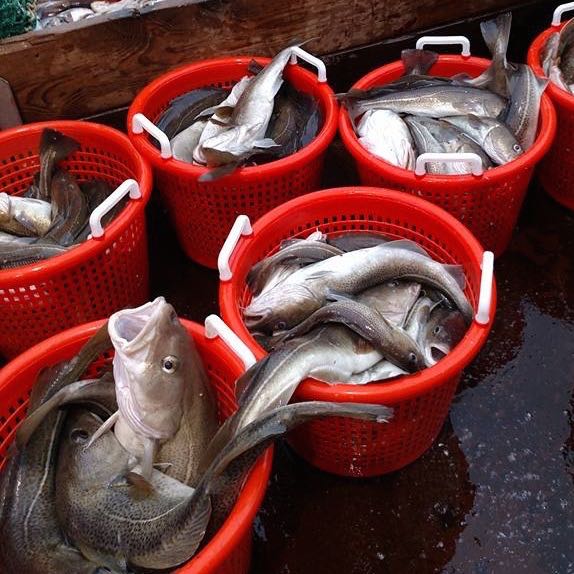Maine Seafood Guide – Cod
Species Description
Season
Status
Regulatory Authority
Harvest Method
Recreational Harvest
Health Benefits & Risks
Buying & Preparing
Brands
Certifications
Links
►Species Description
Atlantic cod Gadus morhua
also known as baccalao, scrod, morue
Wild (cod aquaculture has been practiced in the past but is not currently occurring at a commercial scale in Maine).
Atlantic cod are bottom-dwelling, white-fleshed fish found from Greenland to North Carolina.
►Season
April 1 – April 14 and September 1 – October 7
May not be possessed on board from October 8 – March 31 and April 15 – August 31
►Status
The latest assessment by NOAA determined that both the Gulf of Maine and Georges Bank stocks of cod are overfished and overfishing is occurring. Fishing is still allowed, but at reduced levels. Check NOAA’s Northeast Regional Office for the latest news on Gulf of Maine cod and Fishwatch.gov for status, science, and more.
►Regulatory Authority
New England Fishery Management Council Northeast Multispecies (Groundfish) Plan.
Groundfish is a collective name for cod, haddock, pollock, hake, redfish, flounder, halibut, and other bottom-dwelling finfish.
►Harvest Method
Otter trawl, gillnet, and longline.
►Recreational Harvest
Minimum size limit: 22 inches
Harvest limit: one fish per angler per day.
Season: April 1 – April 14 and September 1 – October 7.
May not be possessed on board from October 8-March 31 and April 15 – August 31.
►Health Benefits & Risks
Cod is low in fat and calories and is a good source of vitamin B12, but contains a lower amount of omega-3 fatty acids than other seafood choices. Cod is low in mercury and other contaminants.
Fresh cod should not be eaten raw due to the possible presence of naturally occurring parasitic roundworms. Cod worms are not harmful when fish is cooked properly to an internal temperature of 140°F, which normal cooking techniques generally exceed, or frozen if intended for raw consumption. A controlled food source means that farmed cod do contain worms.
►Buying & Preparing
Look for a fresh, not “fishy” smell; white translucent color, clear eyes and bright red gills if whole fish. In Maine, cod and other groundfish are landed primarily at the Portland Fish Exchange. A few cooperatives are emerging that sell local cod directly to consumers, such as Port Clyde Fresh Catch.
►Companies, Brands, and Labels
►Certifications & Verifications
Gulf of Maine Responsibly Harvested
►Links
- Department of Marine Resources Groundfish Information
- Cod information from NOAA’s Northeast Fisheries Science Center
- Read Cod: A Biography of the Fish That Changed the World by Mark Kurlansky
- NOAA Fisheries Species Directory

